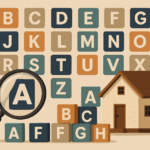
Key takeaways
Almost 1 in 5 first home buyers (17%) now receive financial assistance from their parents, up from 11% in 2022.
This unofficial “lender” is reshaping how younger Australians access the property market, especially with skyrocketing deposit requirements.
The Bank of Mum and Dad isn’t just here to stay—it’s becoming essential for many young Australians.
But generosity must be balanced with long-term personal financial security.
Parents should focus on setting kids up for independence, not dependence, and ensure they don’t sacrifice their own future in the process.
We often talk about Australia’s housing affordability crisis, but one silent force shaping the market is the Bank of Mum and Dad, now one of the country’s largest “lenders,” unofficially of course.
According to Finder’s 2025 First Home Buyer Report, nearly 1 in 5 first home buyers (17%) are relying on financial help from their parents to break into the market.
That’s a big jump from just 11% in 2022.
And this has made a significant change in today's housing markets for the families on both sides of this financial equation.

A generational hand-up… not just a handout
There's nearly 20,000 first-home buyers each year getting help from mum and dad, whether that’s a gift, a loan, or a guarantee on their mortgage.
This isn’t just about giving the kids a head start; it’s a lifeline in a world where the cost of a first home deposit continues to rise faster than most people can save.
But here’s the thing: these buyers aren’t just entering the market earlier, they’re entering it stronger.
The report shows that those with family support had 41% more left in savings after buying, compared to those who went it alone.
In other words, they’ve not only secured the home, they’ve got a financial buffer for renovations, rising interest rates, or life’s inevitable surprises.
And let’s be honest, when you’ve got a 20% deposit ready to go (courtesy of family), you’re not only saving on Lenders Mortgage Insurance, you’re often in a better position to negotiate and buy in more desirable areas.
That compounding advantage can significantly boost long-term capital growth.
But at what cost to Mum and Dad?
There’s a darker side to this growing trend, and it’s one we need to address honestly: parents may be putting their own financial futures at risk to help their kids buy property.
Finder’s Sarah Megginson warns that some parents are so eager to assist, they’re delaying retirement or reducing their own standard of living, saying: .
"I’ve seen this play out myself: mum and dad draw down on equity, or dip into super, thinking it’s a short-term favour.
But those financial gaps can widen with time, especially in an environment where retirement incomes are under pressure and cost-of-living keeps rising.
It’s noble to want to help the next generation, but as I often say: you can’t help others if your own oxygen mask isn’t secure.
Saving alone? It’s taking longer
On the flip side, for those without family assistance, the uphill battle is very real.
40% of buyers without help took five years or more to save a deposit, compared to just 29% of those with parental support.
That time lag isn’t just frustrating, it’s costly.
Property values tend to increase over time, meaning every year you’re not in the market, the gap widens.
So yes, the Bank of Mum and Dad is creating opportunity, but it’s also highlighting a growing wealth divide between those who can help and those who can’t.
Co-buying with family? Protect everyone involved
If you’re thinking about helping your kids, or co-buying with them, here are a few non-negotiables to keep things smooth and protect both parties:
-
Get independent financial and legal advice. Don’t rely on family goodwill, get professional guidance to understand the risks.
-
Create a formal co-ownership agreement. Define how repayments, maintenance, and costs are split. Plan for unexpected scenarios like divorce, default, or early exits.
-
Have an exit strategy. Set clear timelines and conditions under which one party can sell or exit. Avoid emotional entanglements by planning ahead.
-
Update your wills. If you hold property as tenants-in-common, make sure your estate planning reflects your ownership and intentions.
Final thoughts
The Bank of Mum and Dad is here to stay.
In fact, it’s becoming essential for many young Australians just to get a foot on the property ladder.
But with that power comes responsibility and risk.
My advice to parents is simple: don’t give more than you can afford to lose, and ensure you’re setting your children up for financial independence, not dependence.
After all, your financial wellbeing matters too, and with the right planning, you can help your kids without sacrificing your own future.















